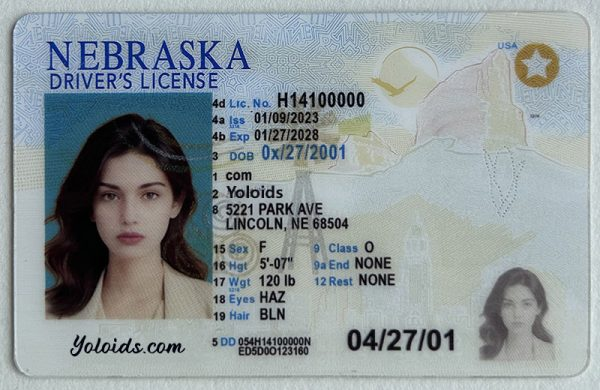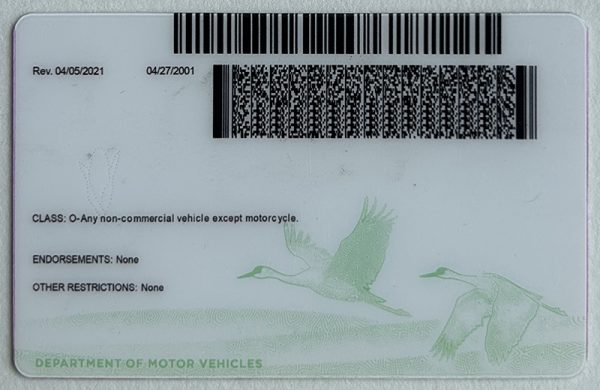In today’s world, fake IDs are sought for various reasons, from gaining access to age-restricted events to exploring personal freedoms. When deciding where to buy a fake ID and assessing its quality, there are essential considerations that help you get the best result. This article will guide you through the process of choosing where to buy a fake ID, evaluating quality, and understanding popular fake ID states like Alabama Fake ID, Arizona Fake ID, California Fake ID, and Connecticut Fake ID.


1. Where to Buy a Fake ID
There are several online sources for purchasing a fake ID, each with different levels of reputation, pricing, and quality. Here’s a breakdown of the most common options:
a. Online Marketplaces
Some people try popular online marketplaces or social media platforms for purchasing fake IDs. Certain platforms, however, have strict policies against selling identification documents, which can increase the risk of scams. Additionally, buying from these sites means your ID may lack quality control, as sellers operate outside any verification or reputation systems. Nevertheless, sites that specialize in fake IDs often operate through their own secure websites.
b. Specialized Fake ID Websites
There are websites entirely dedicated to creating and delivering high-quality fake IDs for clients nationwide. Such sites focus on delivering scannable IDs that resemble authentic IDs in all the important ways: from holograms and magnetic strips to UV features. ID-producing websites usually categorize their offerings by state, meaning you can easily find specific options such as an Alabama Fake ID or California Fake ID. Generally, these sites require uploading a photo, choosing a template, and making a secure payment.
c. The Dark Web
The dark web hosts several fake ID services, often sold by anonymous vendors using cryptocurrency for secure transactions. Although IDs purchased this way may come with high-quality features, the anonymity and complexity of using the dark web can lead to scams. Security is a primary concern on the dark web, so unless you’re experienced in using it safely, the risk may outweigh the benefits.
2. How to Assess Fake ID Quality
Not all fake IDs are created equally, and the quality of an ID can make a huge difference in whether it successfully scans, passes inspection, or even stands up under UV light. Here are the criteria to look for when assessing an ID’s quality:
a. State-Specific Features
Each state ID has unique characteristics, so pay attention to details specific to the state you’re interested in. For instance, an Arizona Fake ID should mimic Arizona’s real ID design, including holograms, micro-printing, and the correct placement of specific security features. This is also true for California Fake IDs, which need accurate UV patterns, color shifting ink, and the iconic California grizzly bear on the ID to pass as genuine.
b. Holograms and Lamination
Holograms are among the most important features on any state ID. They are small, shiny images embedded in the laminate of the ID and visible only under specific light angles. High-quality fake IDs will have state-specific holograms that accurately mimic real ones. For instance, a Connecticut Fake ID should have its state emblem hologram, as well as an optical variable ink emblem that changes color under different lighting.
The lamination itself should be smooth, seamless, and durable. Poor lamination may peel or have visible seams, revealing the ID as fake. Testing lamination by gently bending the ID can help confirm quality, as authentic-looking lamination won’t show air bubbles or begin to lift at the edges.
c. Barcode and Magnetic Strip
To ensure scannability, a fake ID must contain a barcode and, in some cases, a magnetic strip. These need to be encoded with the correct information so they match the details printed on the ID. This information includes your name, date of birth, and sometimes even your address. Scannable fake IDs such as Alabama Fake IDs need to pass through scanners at various locations without triggering alerts. You can test this feature using online barcode scanning apps to see if it matches the details.
d. UV Ink and Micro-Printing
High-quality fake IDs will include UV-reactive ink that displays hidden details under blacklight. For example, a California Fake ID should have a UV bear and “CALIFORNIA” printed in UV ink on the front of the card. Without these, the ID won’t stand up to inspections that involve a blacklight.
Micro-printing is also used on state IDs, where tiny text can only be seen under magnification. If you look closely and see blurry micro-text, it indicates low quality. A genuine look-alike ID will have crisp, clean micro-printing, another signal of top-tier design quality.
3. Identifying Common Red Flags in Fake IDs
While some fake IDs look indistinguishable from genuine IDs, others fall short in crucial ways. Here are some red flags to watch for when considering a fake ID:
a. Price Too Low or Too High
The cost of fake IDs typically ranges between $100 and $150 per ID. While this is the industry standard for a quality product, prices that are too low could indicate poor craftsmanship, lack of security features, or even a scam. Conversely, IDs priced too high aren’t always better and may indicate attempts to take advantage of inexperienced buyers.
b. Poor Customer Reviews
Before purchasing an ID, it’s helpful to check online reviews. High-quality fake ID providers generally have positive feedback, but beware of fake reviews that seem overly promotional. Some websites specialize in reviewing fake ID sites and can be a valuable resource for narrowing down reputable options.
c. Lack of Customer Support
Legitimate fake ID sites often offer some form of customer service, typically via chat or email. A lack of customer service options might indicate a scam, as reliable sellers are more than willing to assist in ensuring your ID meets quality standards.
4. Specifics of Popular State Fake IDs
Fake IDs for popular states like Alabama, Arizona, California, and Connecticut are frequently sought after due to these states’ distinct designs and popularity in nightlife and social scenes. Here’s a look at what makes each unique:
Alabama Fake ID
An Alabama Fake ID will need to feature a vertical design for under-21 IDs, along with precise details like UV printing of “ALABAMA” across the front. Security features also include the Alabama state flag and high-quality printing to prevent detection.
Arizona Fake ID
An Arizona Fake ID should have the iconic Grand Canyon background and the Arizona state seal embedded in the hologram. Arizona IDs are also known for color-shifting ink, which should be replicated accurately. The state is known for strict checking, so IDs here should be high quality to pass verification.
California Fake ID
The California Fake ID is among the most commonly requested, as it’s one of the most widely recognizable IDs in the U.S. It should feature the bear logo, color-shifting ink, UV “CALIFORNIA” text, and correct formatting. High-quality California fakes require attention to the micro-printing, which can be a challenge for some manufacturers.
Connecticut Fake ID
A Connecticut Fake ID requires precise detailing with the state’s official holograms, color-shifting elements, and micro-print text. Connecticut also has UV patterns that can reveal an ID as fake if not executed properly.